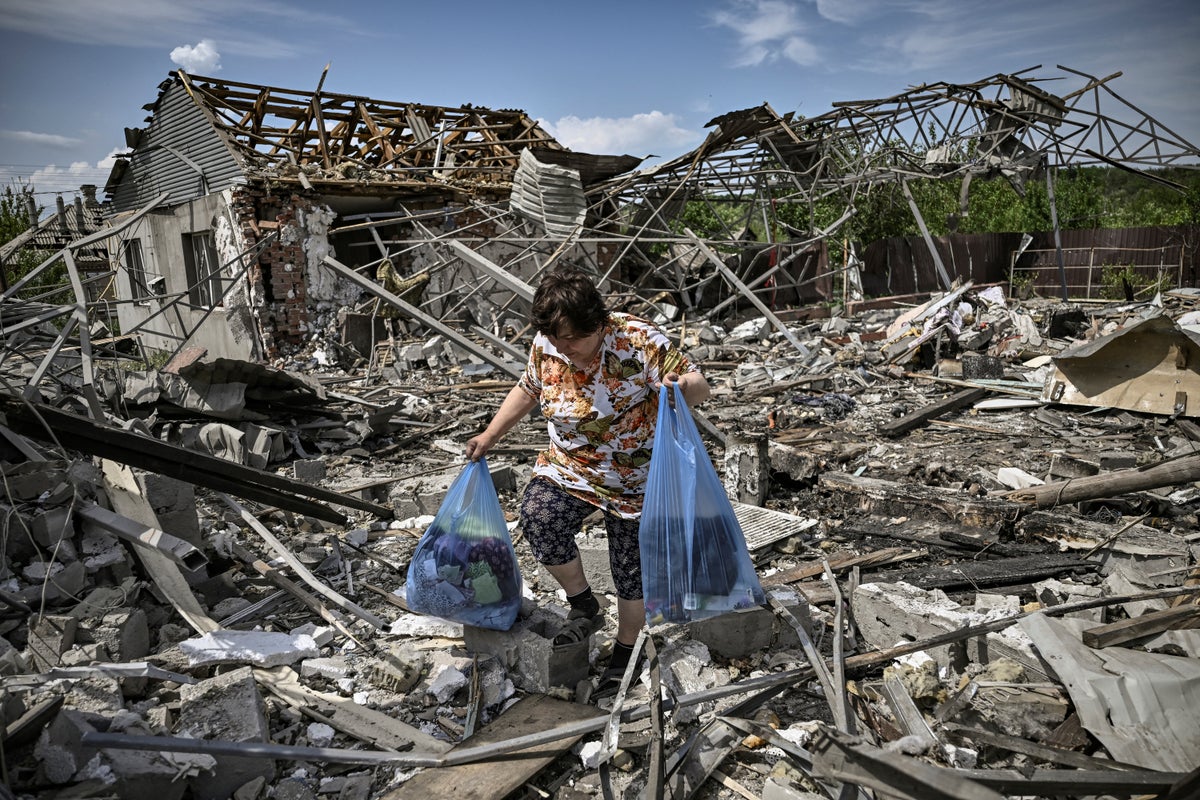
Bombs and bullets are taking their toll of the dead and the maimed. Homes burn; families are torn apart; innocents suffer. The carnage continues one hundred days into the Ukraine war, only the killing fields have changed.
This extraordinary and astonishing conflict, reshaping modern history, shows no sign of ending.
The end of the beginning came with Ukraine’s capital, Kyiv, and its second city, Kharkiv, withstanding and repulsing prolonged Russian assaults; the port city of Mariupol passing under Moscow’s control after months of pounding; and the southern city of Kherson under occupation, but Ukraine launching counteroffensives in the area.
The beginning of the end is a long way off. The conflict, vicious and unforgiving, is now focused in the Donbas. It was here that my colleagues and I covered the separatist war in Donetsk and Luhansk which led to the dismemberment of Ukraine eight years ago. And now it is where the Kremlin hopes for a win which will allow Vladimir Putin to claim victory in the invasion he launched in late February.
The shattered towns around Kyiv such as Bucha, Irpin and Cherniev and Kharkiv city, plus the ruined villages around it such as Vilkhivka, Ruska Lozova and Staryi Saltiv, have been replaced as battlegrounds by eastern towns like Sievierodonetsk, Lysychansk and Lyman.
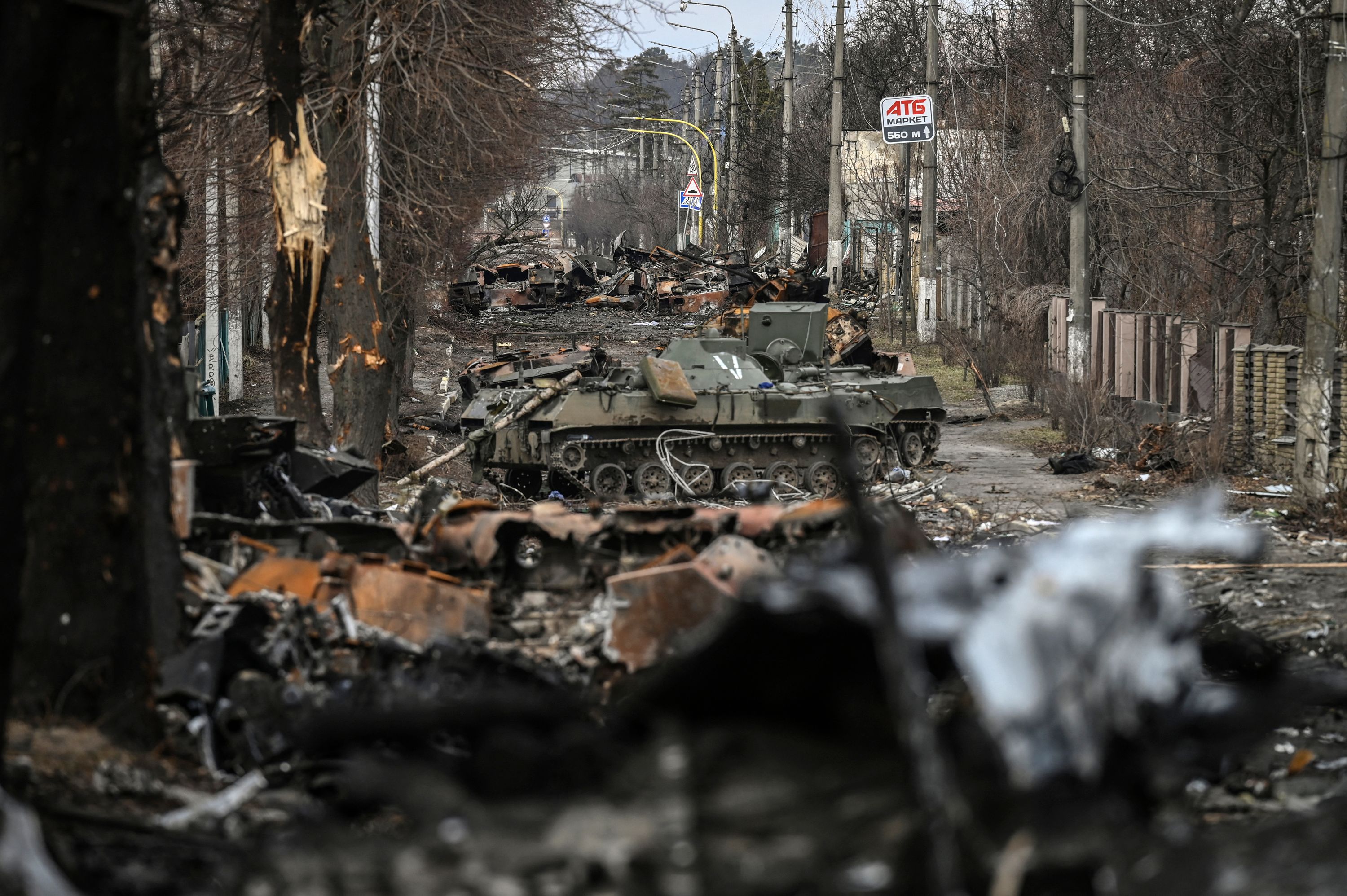
This week, the Russians bombed Slovyansk, where the 2014 insurrection which led to the forming of separatist “people's republics” of Donetsk and Luhansk started. I watched as the separatists, well-armed and drilled, took over the police headquarters, the municipal building and the offices of the intelligence service, SBU, across a weekend. It was reminiscent, on a much smaller scale, of what we had witnessed a few months earlier, the takeover of Crimea by the Russian “little green men” who had suddenly appeared out of nowhere.
The Slovyansk operation was later to be led by Igor Girkin, with the nom de guerre of Strelkov, who had taken part in the Crimea coup and went on to become “defence minister” of the “Donetsk People’s Republic”. Girkin gained much international publicity and was indicted three years ago by prosecutors in Holland for murder, over the shooting down of the Malaysian Airlines Flight 17 in July 2014.
Slovyansk is of strategic as well as cultural significance. The city and the regional capital Kramatorsk next door are keys to Moscow seizing the east. Attacks are taking place there from the direction of Lyman, 15 miles from Slovyansk, which the Russians have largely taken.
At the same time, there is ferocious fighting in Sievierodonetsk and Lysychansk. Capturing these towns would give the Russians control of the Luhansk region, which is half of the Donbas, and an avenue into the rest of the region.
The war in Donbas, a hard land of coal mines and steel plants, is vicious and personal. Many on the opposing sides come from the same communities, even the same family at times. Some used to serve together in the police and the military before in what are now the pro-Russian enclaves.
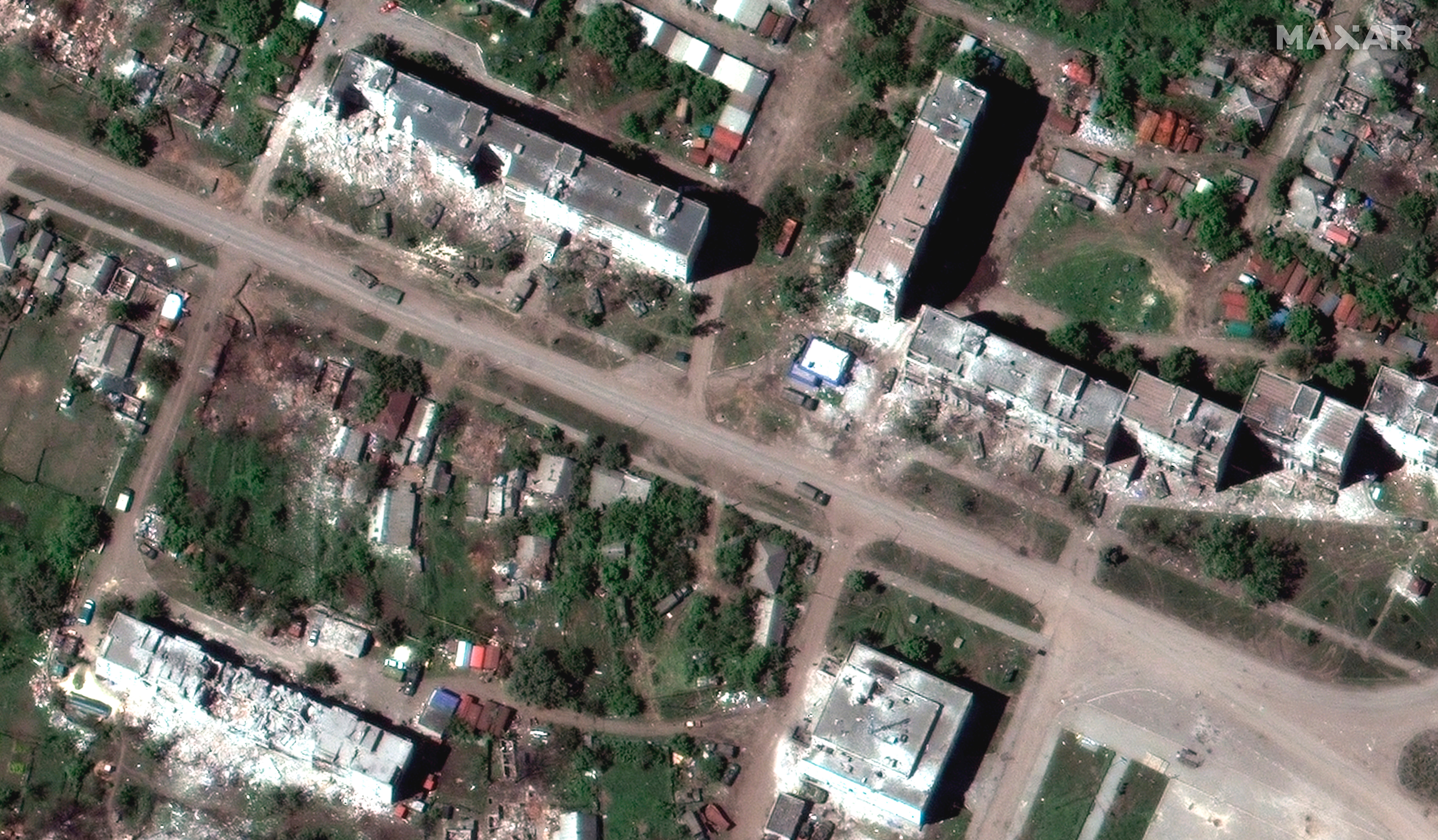
When Leonid Gubarov died fighting the separatists, posthumously receiving a “Hero of Ukraine” award, his father was fighting for the other side.
Anton Diachenko, a gunner in Lysychansk, spoke of the half-brother he grew up with now serving in the forces of the Donetsk “People's Republic” who he hopes to see one day “once he has regained his sanity”.
Bogdan, a marine, told me of his attempts to reach his mother and 15-year-old sister who are trapped in a separatist area of Luhansk.
Sergei Lavrov, the Russian foreign minister, has claimed that his country now holds the momentum in the conflict: “Our obvious objective, of course, is to push the Ukrainian army out of the Donetsk and Luhansk regions and we are going to achieve this objective.”
It may not end there. With occupation of the east, and a land corridor down the Azov Sea established thanks to Mariupol being taken, the Russians may try to push south towards Odesa. It is a port they are already blockading, stopping exports, and inflicting massive damage to the Ukrainian economy.
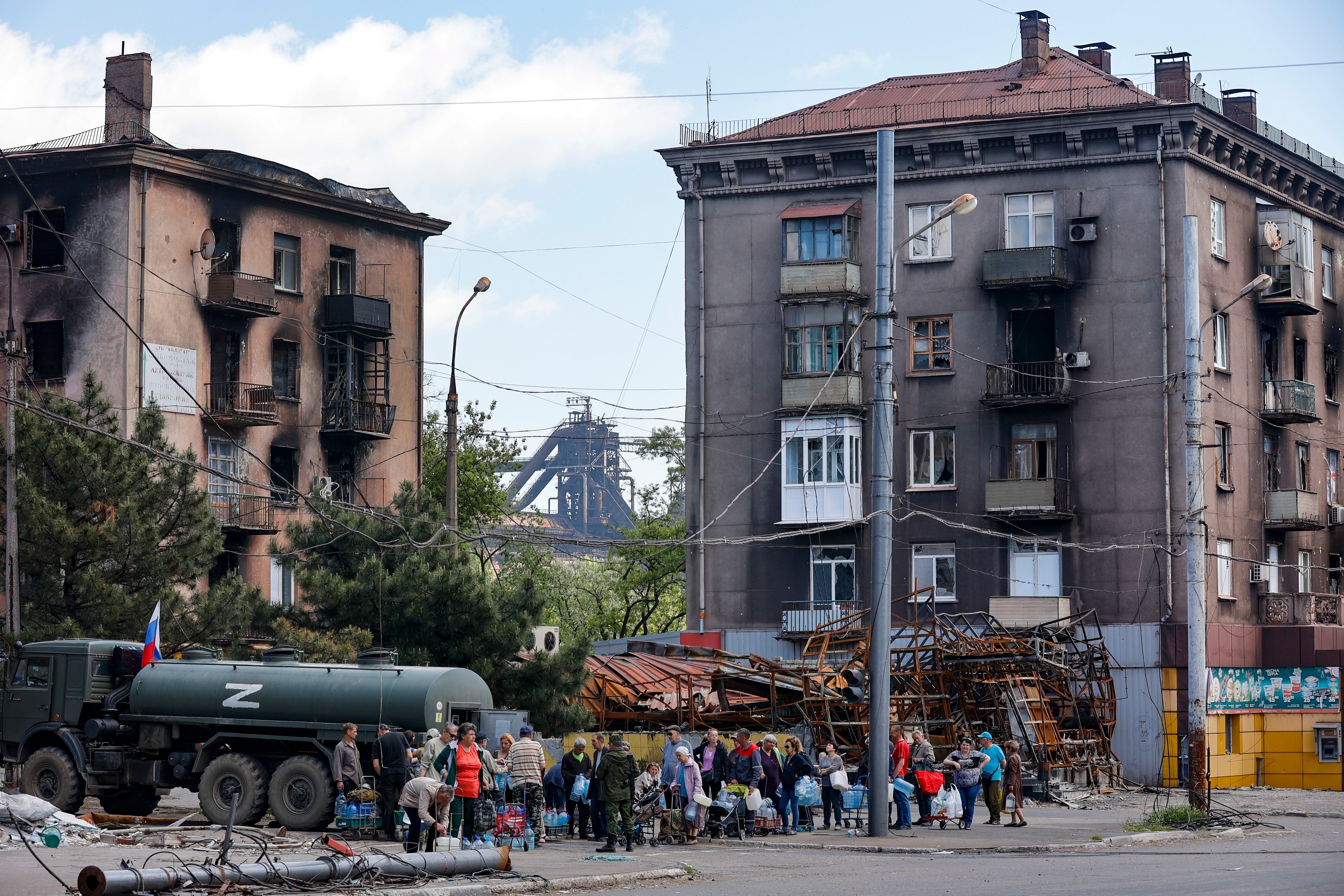
Ukrainian forces have been severely outgunned on all lines of combat in the east, suffering terrible losses. President Volodymyr Zelensky charges that Russia “wants to destroy the Donbas”. The campaign is taking an appalling toll on lives among Ukrainian civilians and the military, with up to 100 soldiers being killed every day. The number of injured is not known, but, according to the battlefield average, three times more fighters are wounded than die in combat.
On every Donbas front line, the message from the Ukrainian fighters is the same – they are facing ferocious Russian artillery assaults, they do not have enough long-range guns or rockets to respond, and they are being limited in the use of what they do have due to lack of ammunition. Promised advanced western weaponry simply was not coming through fast enough to make a difference.
Some of those who spoke knew only too well about the damage which can be caused by Russian firepower, having been injured in action.
Bogdan, the marine with his family in separatist Luhansk, has shrapnel injuries to his back. “The shelling is brutal, they focus on a target and they just keep pouring in round after round, that gets very hard to face, we are losing a lot, dead and injured Unless we get weapons to counter the Russians, get a fighting chance, then I think a lot of us have to face the possibility of getting killed.”
Acts of heroism, like using rocket-propelled grenades (RPGs) against armoured vehicles, which have been lauded in the international media, are now proving to be costly in lives.
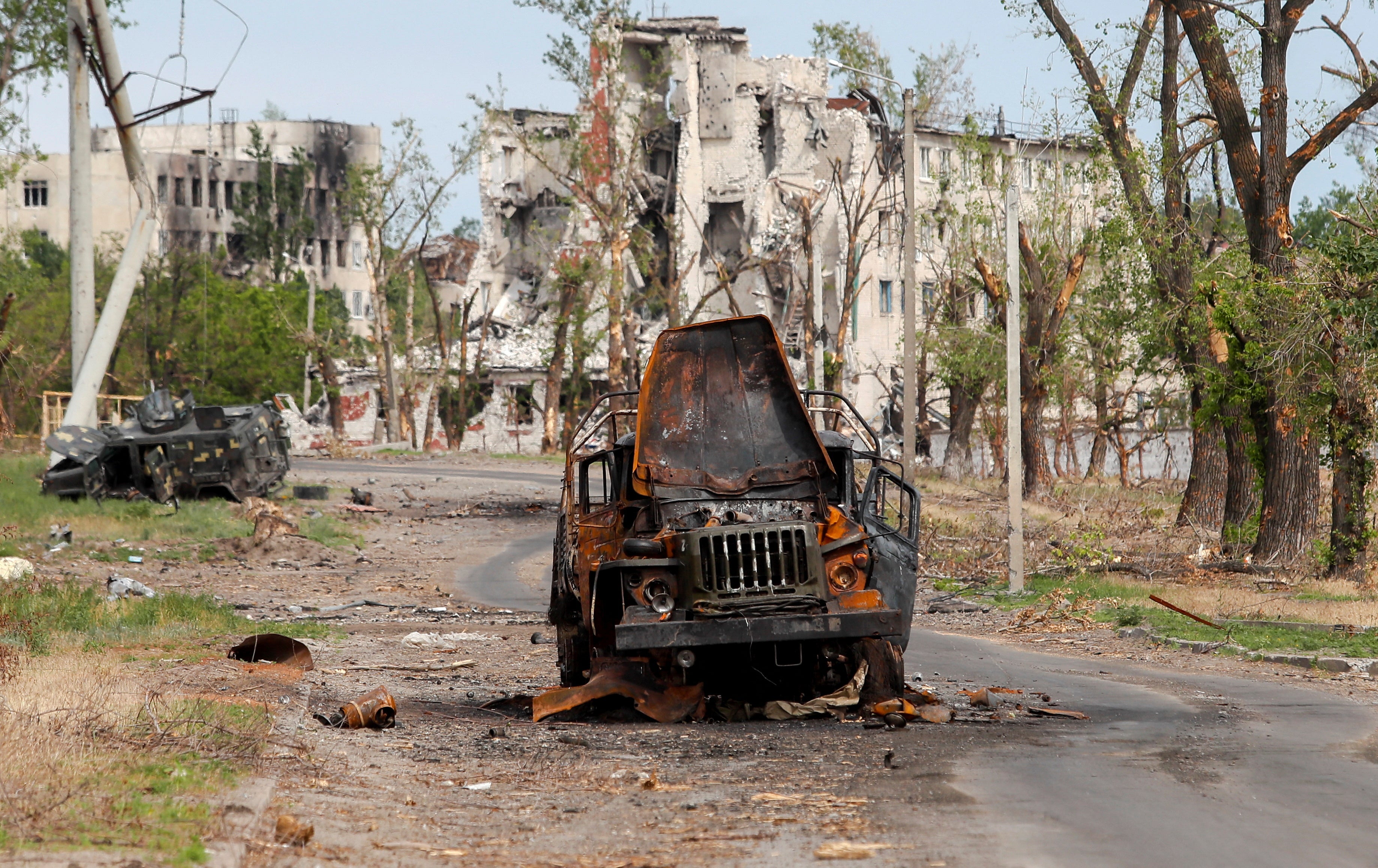
“The problem is that Russians are using their modern tanks, and they have learned from their mistakes. It is getting much more difficult to be effective with just RPGs; and also very dangerous,” Bogdan points out.
Valeryi Piskoviy, a 22-year-old drone operator, who received leg injuries in an operation in which two comrades died, described how the Russians were using “heavy artillery and air strikes. One of their tactics is to force us into a location and then just hammer it, we often don’t have anything with which to answer back.”
But there are some encouraging developments amid the gloom. After a lengthy period of deliberation, the US has agreed to supply Ukraine with new weaponry including M142 High Mobility Rocket Systems (HIMARS). Joe Biden has announced the range would not allow them to be launched into Russia, but the precision-guided missiles can hit targets 45 miles away – into Russian firing points.
Also this week, the UK confirmed that it will send American-made self-propelled M270 launchers with a range of 49.7 miles which will, again, make Russian positions vulnerable. Ukrainian troops will be trained in Britain to “maximise” the effects of the weapons, the Ministry of Defence in London has said.
Ukrainian forces will have to hold the line until these systems are ready for use. And that, inevitably, will mean the haemorrhaging of more lives, and the demoralising effect this has on the survivors who continue to fight.
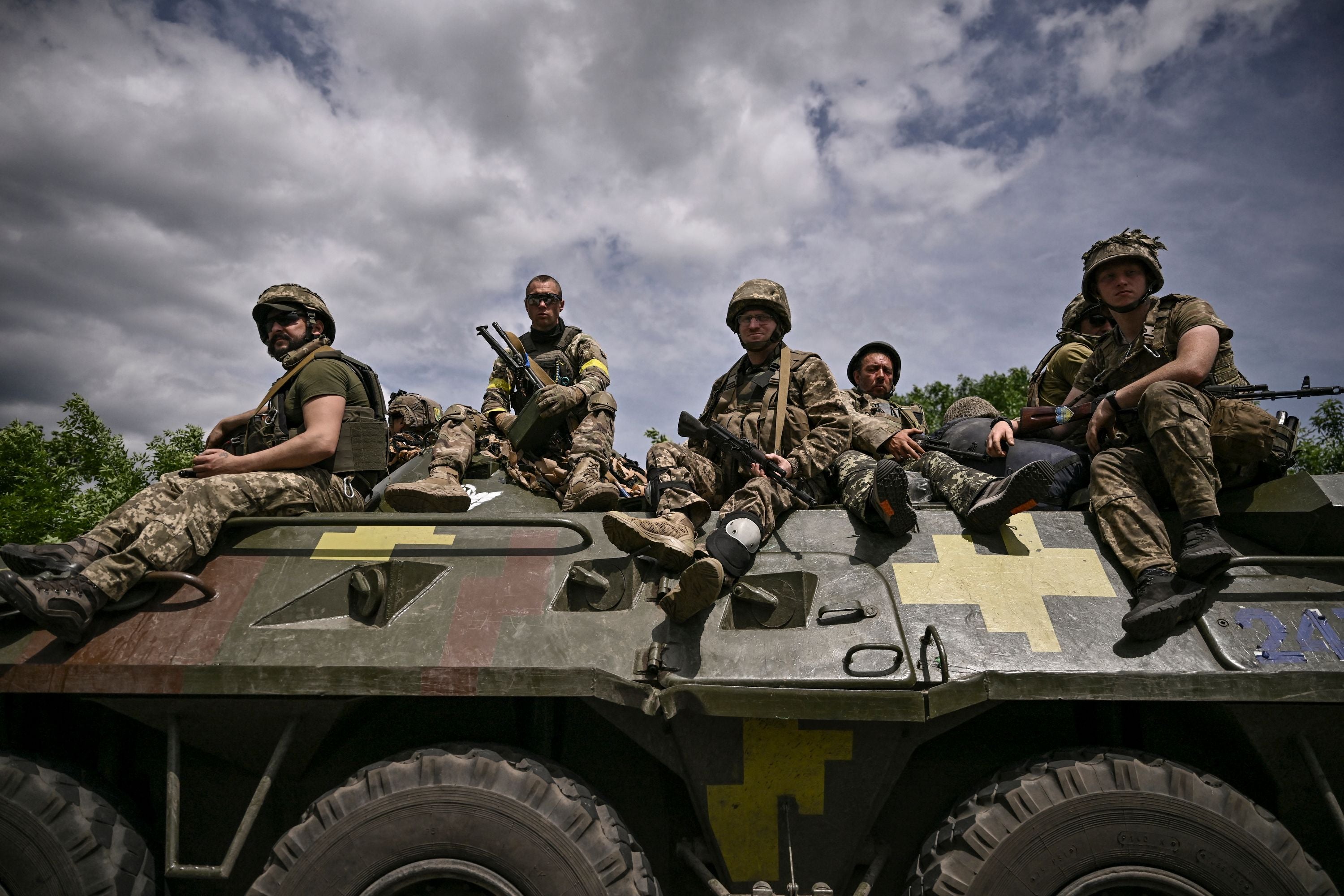
The Ukrainian government says that it is on the way to getting a million men and women under arms, 400,000 regular troops and 600,000 from the volunteer Territorial Defence Force. That, however, will take time. The situation for Ukraine is thus serious. But it could have been much, much worse.
On the early morning of 24 February, when we were in Kyiv experiencing the first Russian missile strikes, it seemed it would only be a matter of time before the capital fell. Ukrainian air defences managed to shoot down a large number of incoming missiles – but others got through, hitting apartment blocks, destroying homes, killing and wounding people.
Russian raiding parties repeatedly tried to get into the city. They were repulsed in firefights in the suburbs. It was claimed that infiltrators, including a team of Chechens, were in the capital to murder President Zelensky and members of his government. I saw dead bodies of the “assassins” and some being arrested.
We saw a queue outside a supermarket getting hit by a rocket, killing, among others, an elderly woman who had come from one of the metro shelters
A 40-mile-long Russian military convoy headed our way. A terrible threat awaited us, warned western politicians and military experts. The Ukrainian capital would be razed and left like Grozny after the Chechen war 20 years ago. And, as Moscow’s forces edged closer to within 20 miles of the city centre, that seemed to be a distinct possibility.
Ferocious combat took place in the towns and villages outside Kyiv: reporting on it became difficult and risky. Five journalists were killed in one week. My colleagues and I found ourselves caught up in the fighting, once having to abandon our car in what had become a free-fire zone.
I went to Kharkiv to find it under ceaseless missile, artillery and air strikes. The Russians had attempted to storm the city a number of times and failed. They were now destroying Ukraine’s second city with long-range fire.
A significant proportion of the population was living underground in the Metro system for safety. Emerging to buy food or collect items from homes damaged and uninhabitable, was dangerous. We saw a queue outside a supermarket getting hit by a rocket, killing, among others, an elderly woman who had come from one of the metro shelters.
Yet slowly, against the odds, amid much bloodshed, the tide turned. The Russian forces were driven out of the north around Kyiv and then from around Kharkiv. For the first time, it seemed that Ukraine would survive Vladimir Putin.
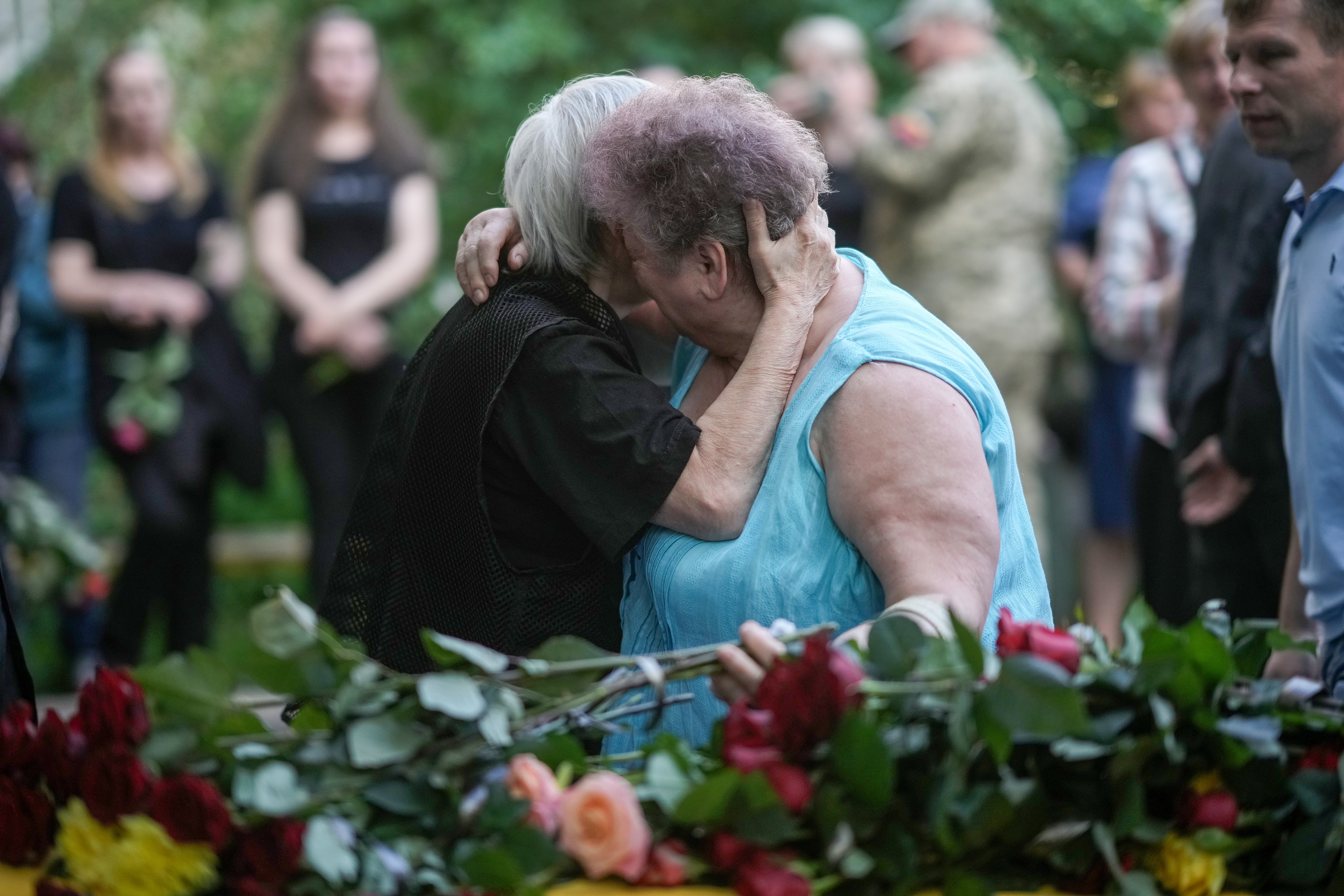
Horrific atrocities emerged as the Russians retreated, of murder torture and rape; victims dumped in mass graves and left to rot in streets to be eaten by animals. Looting and arson in homes, schools, offices and factories.
The town of Bucha has become an emblem of this savagery. But I visited scenes of brutality also at Irpin and Makariv, Cherniev and Hostomel and the villages around Kharkiv. There was also more overt evidence of mass killing, such as in the bombing of Mariupol and Kramatorsk railway station.
The atrocities, with evidence of more cases continuing to emerge each week, have added to the anger and bitterness in Ukraine over the war: in Bucha I stood next to Nicolai, a captain in a volunteer unit, as his men laid out dead Russian soldiers, caught in an ambush, on ground bloodstained and sprinkled with spent ammunition.
“I don’t feel any pity for them, none. Maybe I will be able to one day, but not now. You have seen what they have done here: killings, rapes,” he said. “More will come out on that, believe me. They were meant to be soldiers, they behaved like savages.”
I first met Nicolai, whose family lived in Bakhmut, in the Donbas, in 2014 when he was taking part in a skirmish for Donetsk airport. Then again a year later at Debaltseve as he was lying on a stretcher in bloodied bandages – one of the hundreds injured alongside the 270 Ukrainian soldiers killed in a battle during which the separatists, backed by Russian artillery, had the whip hand.
The last time we met was last week, in Lysychansk, as he returned, exhausted, from a mission ferrying supplies to troops in Sievierodonetsk. He spoke about the losses being suffered, the lack of ammunition, and also about trying to persuade his parents, to move from Bakhmut to Pokrovsk, also in the Donbas, but further away from the front line.
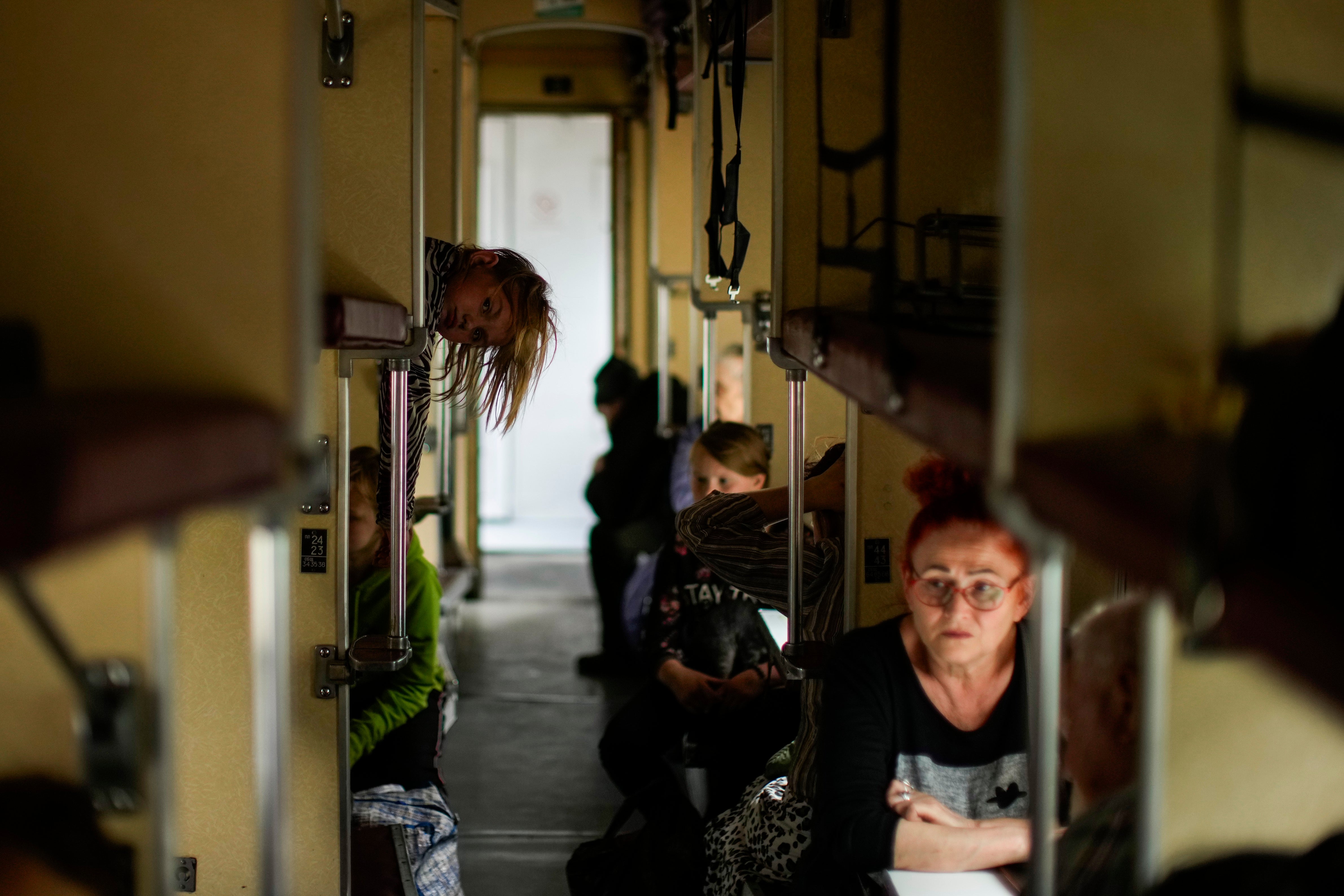
We discussed those separatists and nationalists, politicians and journalists, who were here during the 2014 conflict. Igor Girkin, the separatist champion, is now a critic of Putin’s “special military operation”, sniping from the sidelines on social media about the shortcomings of the mission.
In one broadcast he declared: “Does the superiority of the Russian Federation’s armed forces in aviation and heavy weapons guarantee victory over an enemy, for whom our offensive plans are obvious, which is prepared for defence and has high morale? My answer is NO — there is no guarantee.”
Nicolai laughed at this: “I wish I was as confident as Comrade Igor. Things are pretty tough, especially at Sievierodonetsk. I think with the Americans and British weapons we can turn this around, but will these come on time? We’ll have to see.”
After breaking off to issue orders to his men he continued: “We have our own views on whether we should pull back from Sievierodonetsk, we need to avoid another Mariupol. But it’s not our decision, it’s the politicians at the end.
“But you know I always felt when the war started that this is where we’ll end up, in the Donbas. This is where Russia began the invasion of our country eight years ago, and this is where this thing will be settled, I think. We cannot just give up the east. We need to fight. It’ll be long and difficult: I fear that – sadly – many will not be around to see our victory.”







